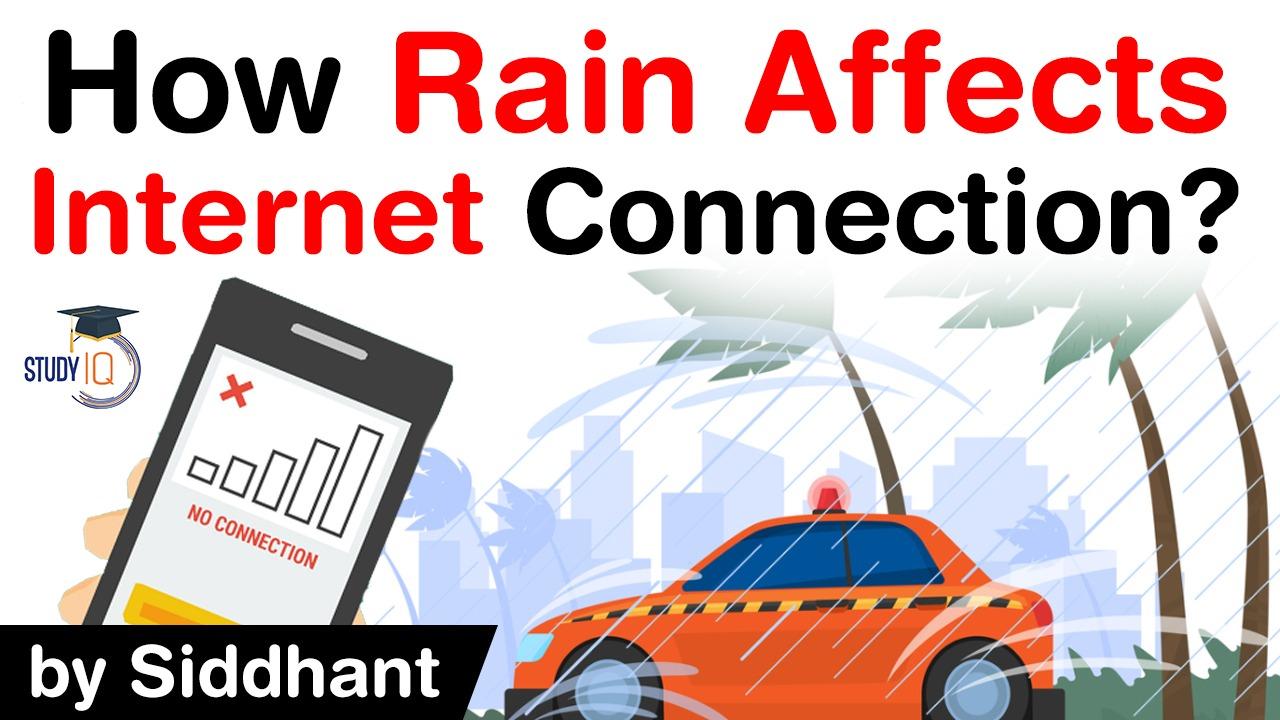Table of Contents
COMMUNICATION
- As the monsoon begins to officially retreat, many in India will be looking forward to some relief from a phenomenon that they have come to expect whenever it rains: Internet connections become unstable, and cell phone networks deteriorate.
- To understand how we communicate or send messages today via the Internet across continents – and then how this communication is disrupted – we first need to understand the fundamental nature of electrical force.
Electrons in communication
- There are three fundamental building blocks, or ‘Lego bricks’ that nature uses to make all matter – two kinds of quarks, and the electron. For our purposes, we need to discuss only the electron.
- All matter consists of many, many electrons. Like the other Lego bricks, electrons have a property called mass, which indicates how strongly the gravitational force acts on them, and is therefore directly related to their weight.
Electrons in communication
- Another property of electrons called electric charge indicates how strongly the electrical force acts on them. The electron’s charge also decides the strength of the electrical force they apply on other objects that, too, have a charge (like the two other Lego bricks, for instance).
- This force, like the force of gravity, acts at a distance. So, two electrons separated by a long distance apply electrical forces without ever making contact. Since an electron is charged, the space around it is filled with an electric field.
Electrons in communication
- This is how we communicate. An electromagnetic wave is initiated at some location by wiggling electrons, which then washes over electrons at some distant location.
- The word ‘signal’ specifically means electromagnetic waves. The electrons in your eyes can also respond to these waves, provided the wavelength – the distance between peaks in the wave – is within a specific range. In this particular wavelength range, electromagnetic waves are visible to us; they are light! The most basic form of long-distance communication – flashing a bright light and using Morse Code – uses the transfer of electromagnetic waves from one location to another.
Optical fibres & the rain
- These concepts equip us to understand the only mode of communication that matters anymore, the Internet. This is essentially a vast network of computers across the world that can transfer electromagnetic waves to each other, and therefore communicate.
- There are two primary ways to transport waves — by optical fibre, and cellular towers (via satellite link). Optical fibres are long, thin glass rods of thickness less than human hair. Light is confined in the rod due to the phenomenon of total internal reflection.
Optical fibres & the rain
- Monsoon rain might interrupt this subterranean network in many ways. The combination of water seeping into the ground and landslides can damage the various electric components in the network, or cause physical damage at locations where the fibres are spliced together.
- There can also be similar damage, or power outages at intermediate locations, where your local service provider connects to the Tier 1 optical network, and then to your home.
Cell phones in the rain
- When your cell phone is connected to the Internet, electromagnetic waves travel from your device through the air to a cell tower. You could think of this as a giant antenna. The electrons in this antenna bounce up and down. When they do this, they produce their own electromagnetic waves, which travel to a central location managed by your service provider.
- At this location, the waves get ‘processed’ in some way, and are sent either to the optical fibre network (the Internet) or another phone (phone call, text message, etc.).
- There are various kinds of processing that might occur.
Cell phones in the rain
- Somehow, the message from your phone needs to be ‘translated’ from radio to infrared waves. If you were using Morse Code, you might imagine that the radio waves detected by your provider flash on and off, containing your message. The laser managed by your provider needs to be made to produce the same sequence of flashes that travel through the fibre network.
- The reasons for interruption in this communication chain during the monsoon are different compared to the optical fibre network.The radio waves travelling between your phone and the cell tower can make electrons in water drops wiggle, interrupting communication. The size and number of rain drops reduce the signal strength due to the scattering of the radio waves, while water vapour in the atmosphere absorbs the radio waves, converting them to heat (like in your microwave oven).
Cell phones in the rain
- Further, heavy monsoon rain, wind, and lightning can cause damage to cell towers, resulting in interruptions in the area they cover. Note that this is also why you find yourself without any signal in some areas – there is no cell tower nearby. But perhaps the most common cause of interruption is ‘jamming’. When too many people try to communicate through signal processing locations at the same time, some messages get lost.
- Getting that favourite meme from its author’s computer to yours is, therefore, an effort that involves electromagnetic waves travelling many thousands of kilometres. It is an extraordinary achievement of modern science, and it would seem amazing that it works at all! Perhaps this can ease your frustration somewhat the next time your Internet goes off during a rainstorm!
Latest Burning Issues | Free PDF

























 WhatsApp
WhatsApp